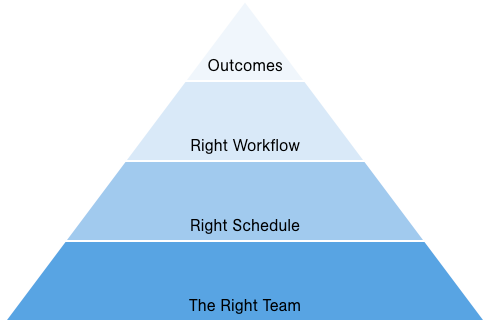Town halls help pharmacies Get In Sync with med sync
Clinical Performance

Key takeaways from the Town Hall series on medication synchronization
During the second half of 2015, Health Mart® kicked off its latest series of Town Halls across the country, focused on helping independent pharmacies “Get In Sync” by implementing or improving a med sync program. These events feature accomplished pharmacy owners as guest speakers, who share from their own experience. Additional Get In Sync Town Halls will take place in 2016 (click here to see if there is one near you).
For those unable to attend a Health Mart Town Hall, we wanted to provide a recap of the key takeaways:
- What med sync is and its main benefits.While some pharmacies have already implemented med sync and others are planning or considering it, many are still curious about learning exactly what med sync is. Health Mart’s working definition is: a proactive, patient-centered approach that aligns all of a patient’s refills to a single “appointment” date each month.
From: Multiple scripts, multiple refill dates, multiple store visits 
To: Multiple scripts, one refill date, one scheduled store visit The main benefits of med sync are:
- Streamlined operations. Med sync provides pharmacies the ability to proactively organize workflow and decide when to fill many prescriptions.
- Enhanced clinical performance. Med sync helps improve compliance as it ensures that prescriptions are regularly refilled.
- Improved financials. Because med sync ensures that prescriptions are consistently refilled, it results in more prescriptions per month. One study showed that for every 100 patients enrolled, a pharmacy’s expected revenue increased by more than $91,000 per year.
- The 5-step medication synchronization process.Health Mart suggests a simple five-step synchronization process:

- Patient identification and recruitment. Eligible patients are those with two or more maintenance medications, yet the best place to start is with those on three to five medications. It may be tempting to start with those on more medications, but consider holding off on the more complicated cases until you have some early success. Recruiting can be done in person, over the phone or through external recruitment.
- Selection of medications. Include medications taken regularly by patients, and avoid controlled medications or those with frequent dose changes.
- Alignment of meds. Select a time interval (like 28 or 30 days) and choose an “anchor” medication to serve as the anchor point for synchronization and an appointment date. In getting started, after determining the anchor, complete all “short fills” where the patient needs additional medications before beginning the regular sync timing.
- The appointment. At the initial appointment (which might take 20–30 minutes) do a review with the patient of their medications and use motivational interviewing techniques. Identify other opportunities to serve patients, such as immunizations. The time you save by syncing meds in advance should free up your pharmacist’s time for the appointments.
- Maintenance. Have a med sync calendar to guide activities, short fill any new prescriptions, and adjust prescriptions if there have been hospital stays or changes in medications.
- Building the foundation for med sync.Med sync is built on a foundation with four layers:

- Right team. Med sync starts with having the right team in place; then explaining, training and engaging them in med sync, along with cross-training.
- Right schedule. Owners want to have the best people working at the appropriate times, with the optimal schedule based on store traffic. Staffing should cover walk-in prescriptions and med sync appointments. Med sync decreases (but doesn’t eliminate) some pressures in filling walk-ins.
- Right workflow. This includes clear definition of the appropriate steps and routines.
- Outcomes. The right team, schedule and workflow yield positive clinical, operational and financial outcomes.
- Keys to success in implementing med sync.Speakers at the various Town Halls shared some keys to implementation, including:
- Planning.
- In the first 30 days, determine the specific program, select a champion, set goals, enlist any vendors, secure materials and train staff.
- In days 31–60, go live, begin enrollment, monitor results, continually remind staff of goals, consider an enrollment contest and review weekly results.
- In days 61–90, constantly evaluate progress, consider additional training, determine additional groups of patients to target for enrollment, evaluate additional services to discuss during monthly appointments, expand marketing and monitor outcomes.
- Operations. Engage all staff, set realistic goals and leverage technology.
- Marketing. Use multiple methods to create awareness of your pharmacy’s med sync program among patients, prescribers and within the community.
- Planning.
The Town Halls made clear that many pharmacies are proceeding to implement med sync and among those who are not yet implementing, interest is high. Reasons for high interest include operational, clinical performance and financial advantages.
To learn more about med sync, see the Medical Synchronization Education Center, sponsored by Health Mart.
To learn more about joining Health Mart, visit BecomeAHealthMart.com.
